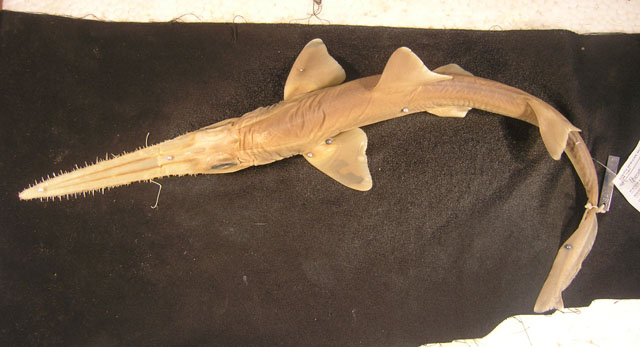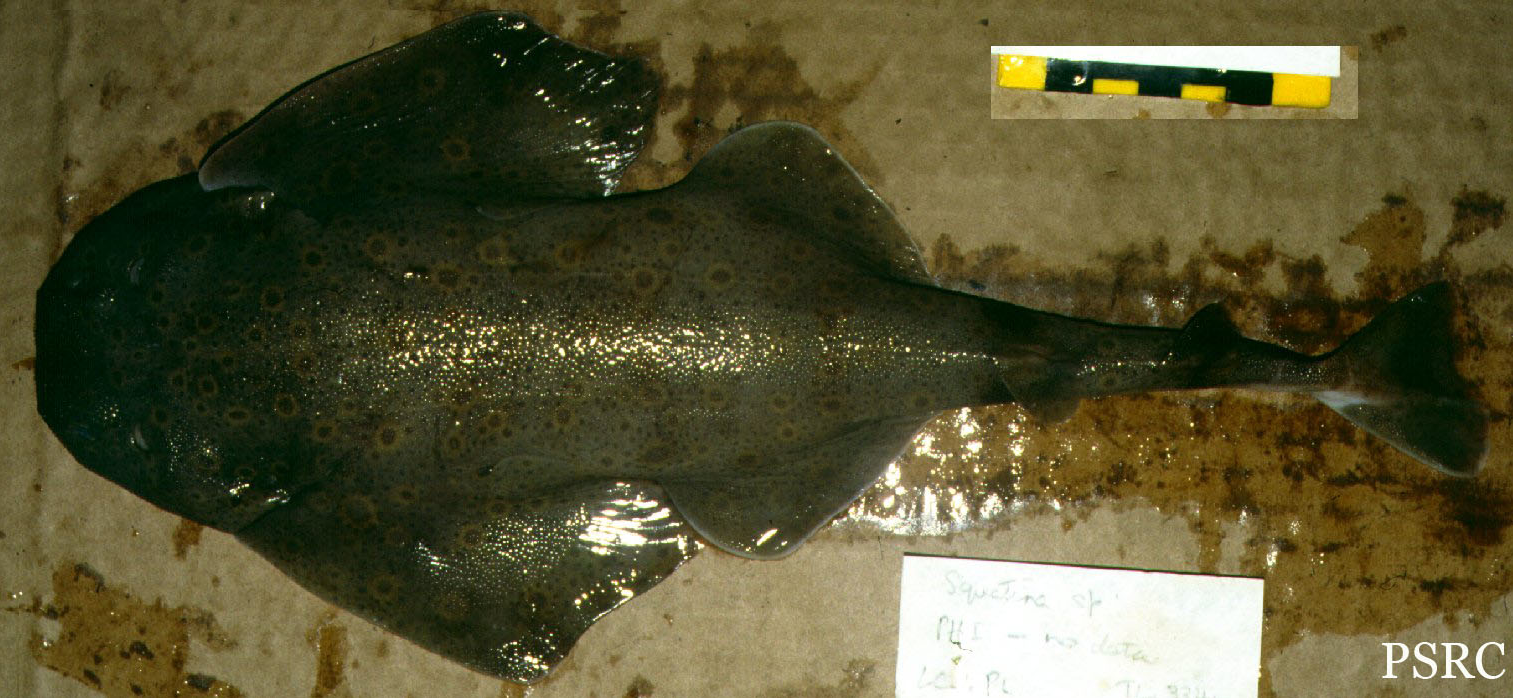 by Angela Szesciorka, Vertebrate Ecology Lab
by Angela Szesciorka, Vertebrate Ecology Lab
One hundred and forty two new species were discovered last year. Four of those were deep-sea shark species discovered by Moss Landing Marine Laboratories’ Dr. David Ebert and his colleagues. Their findings, as well as some interesting facts about the sharks, were featured in National Geographic among the new species found in 2011.
The previously unknown shark species they described included Pristiophorus nancyae, Etmopterus joungi, Etmopterus sculptus, and Squatina caillieti (does that last one sound familiar?).
Pristiophorus nancyae was named by Ebert and Dr. Gregor Cailliet after it was accidentally captured in a 490-meter trawl off Mozambique. This species, also called the African dwarf sawshark, is the seventh species of known sawshark. Like all sawsharks, P. nancyae has an elongated beak (rostrum) like a sword. It will swim with schools of fish, sideswipe prey with its rostrum, then snatch them up. P. nancyae was named for Nancy Packard Burnett because of her support for chondrichthyan (sharks and rays) research at the Pacific Shark Research Center at Moss Landing Marine Labs.
Etmopterus joungi, a new species of lanternshark, was named by Ebert, James Knuckey, and Dr. George H. Burgess after being discovered in northeastern Taiwan (for sale at a fishmarket!). Knuckey is a master’s student in the Pacific Shark Research Center (PSRC) at Moss Landing Marine Labs studying the phylogenetics of eastern North Pacific skates. The new lanternshark is morphologically similar to the Etmopterus pusillus group. The body of the lanternfish contains light-producing organs called photophores, which can be used to light up the darkness of the deep-sea and for luring prey.
A second lanternshark, Etmopterus sculptus, was described by Ebert, Leonard J.V. Compagno and Marlee J. De Vries after being found off the coast of southern Africa. E. sculpus is morphologically similar to the Etmopterus lucifer group and was named after the sculpted appearance of its linear denticles. E. sculpus is found along the upper continental slopes between Namibia and southern Mozambique at depths between 450 and 900 meters. Unfortunately there are no publically available photographs of this new species, so the drawing below must suffice.
Squatina caillieti, an angel shark, was named by Ebert, Jonathan H. Walsh, and Compagno in honor of Moss Landing Marine Lab’s Gregor Cailliet, and is the only known representative of its family. It was named from a single specimen collected at 370 meters depth off the island of Luzon (Philippines). As a bottom-dwelling shark, S. caillieti has wing like pectoral fins and lies partially buried in sediment waiting to ambush passing prey.
According to the PSRC, these discoveries are part of a recent boom in new species as well as shark and ray finds.
“Over the past decade, about 200 new [shark] species have been described, compared with fewer than 200 in the previous three decades”, Ebert said.
MLML is the second highest contributor to the discovery boom, especially with respect to publications, according to Knuckey. And the rates of description have been increasing every decade. The graph below shows the trend of new species discoveries since the mid-1700s.
According to the Journal of Fish Biology’s review of the taxonomy of chondrichthyan fishes, the Australian National Fish Collection, Commonwealth Scientific and Industrial Research Organisation (CSIRO) and Moss Landing Marine Labs have contributed descriptions for 125 species since 2000.
Yet very little is known about the discovered species’ behaviors or their predators. Many shark species are restricted to narrow ranges and have limited habitats. Funding tends to go toward higher profile species, so research for lesser-known species is scarce.
“A lot of [shark] species are going under the radar because they're not as high profile as, say, the great white shark”, said Ebert.
According to Knuckey, “One other thing that the common layperson, or even scientist, doesn’t seem to understand is that most new species out there aren’t ‘sexy’ species … They are often small or deep water, drab-colored species that have only been seen once. Even though they don’t get the publicity of some well-known species, it is important to know what species of ‘non-sexy’ species are out there, because if you don’t know what species exist then you cannot protect them adequately.”
According to the International Union for Conservation of Nature, 32 percent of sharks and rays are threatened with extinction, especially due to overfishing. It is estimated that more than 73 million are killed annually, many just for their fins. Because sharks take years to mature and have few young, they are particularly sensitive to overfishing. Despite these threats, little is being done to protect them.
In 2010 Hawaii became the first state to ban the possession, sale and distribution of shark fins followed by Washington, Oregon, Guam, and most recently (the much anticipated and not without controversy) California.
You can read The Pew Environment Group’s 2011 paper on The Future of Sharks here.
The complete list of new species found in 2011 is listed on the California Academy of Sciences website. The list includes one reptile, three coral species, 11 plants, 9 sponges, 13 fish, 31 sea slugs, and 74 arthropods (mostly ants and goblin spiders). The list can be found here.






